Wide angle veiws to the North-West

|
The camera equipped with a super-wide angle lens (114° × 84°)
was positioned on the end of the pier which is visible on the atoll's left side
in front of the Enewetak Radiological Observatory. Full-frame digital camera
Canon EOS 1Ds Mark III was equipped with AF-S Nikkor 14-24mm f/2.8G ED lens set
to 14 mm focal length. A Nikon lens on a Canon camera body looks like nonsense
but it is not. The fantastic quality of Nikon lens made Peter Aniol to modify
this lens for the Canon EOS body. The camera was operated by means of Canon TC-80N3
timer remote controller. The images were taken in 10 seconds intervals. The
camera orientation was exactly to the north-west, i.e. against the comming lunar
shadow. The horizontal angle of view is 114°, the north-west is
exactly in the center, West is 12° far from left edge of the image and the North
is 12° far from the right edge. The altitude of the Sun above the horizon is 56-57°.
It is possible to identify
Venus, Mercury, Procyon, Castor, Pollux and Capella on the images taken
during the totality.
|
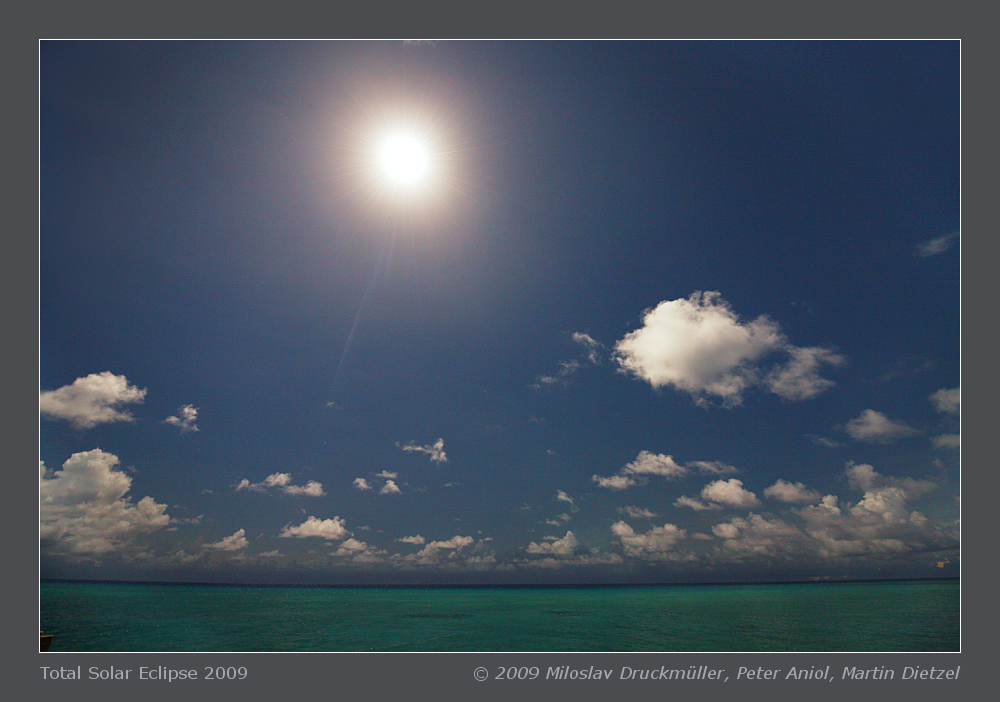 |
|
|
03:28:04 UT, 35 seconds before the second contact
|
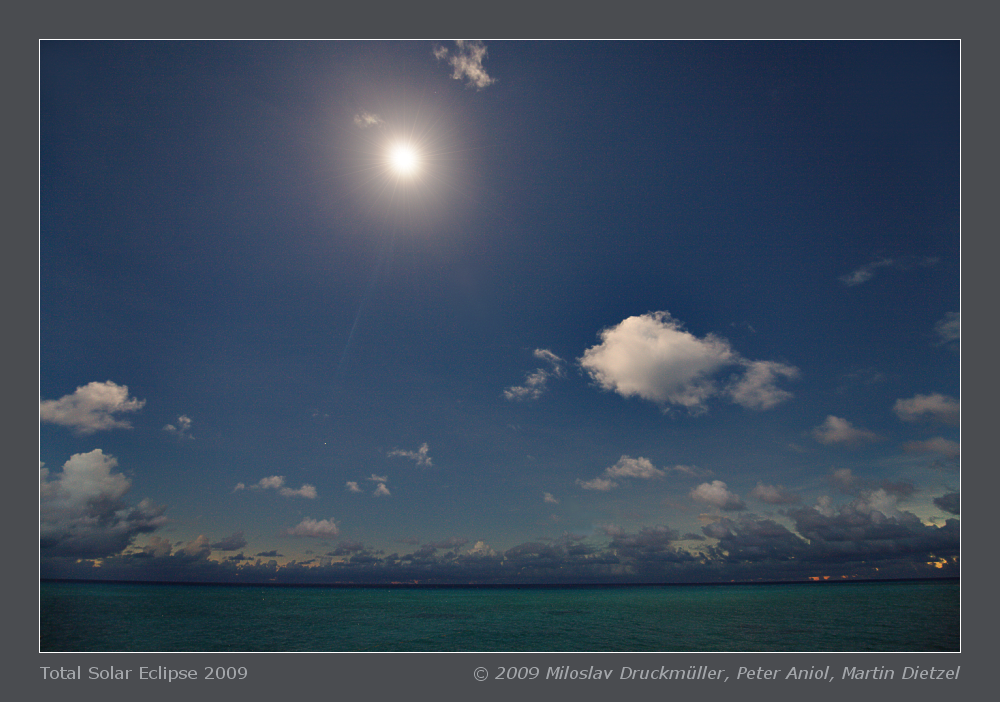 |
|
|
03:28:24 UT, 15 seconds before the second contact
|
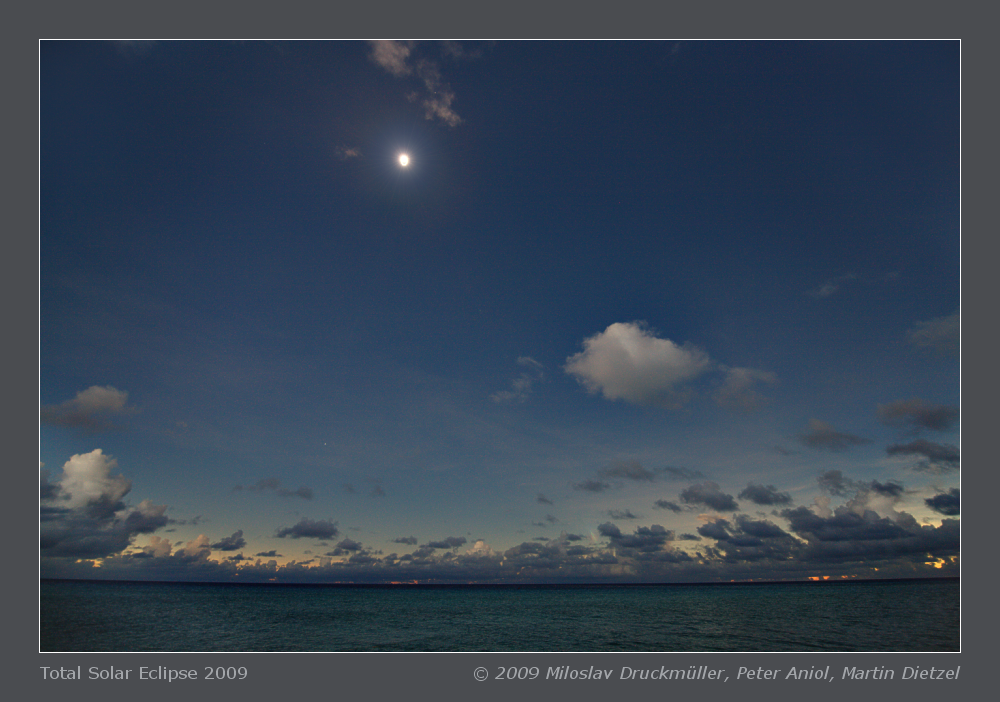 |
|
|
03:28:34 UT, 5 seconds before the second contact
|
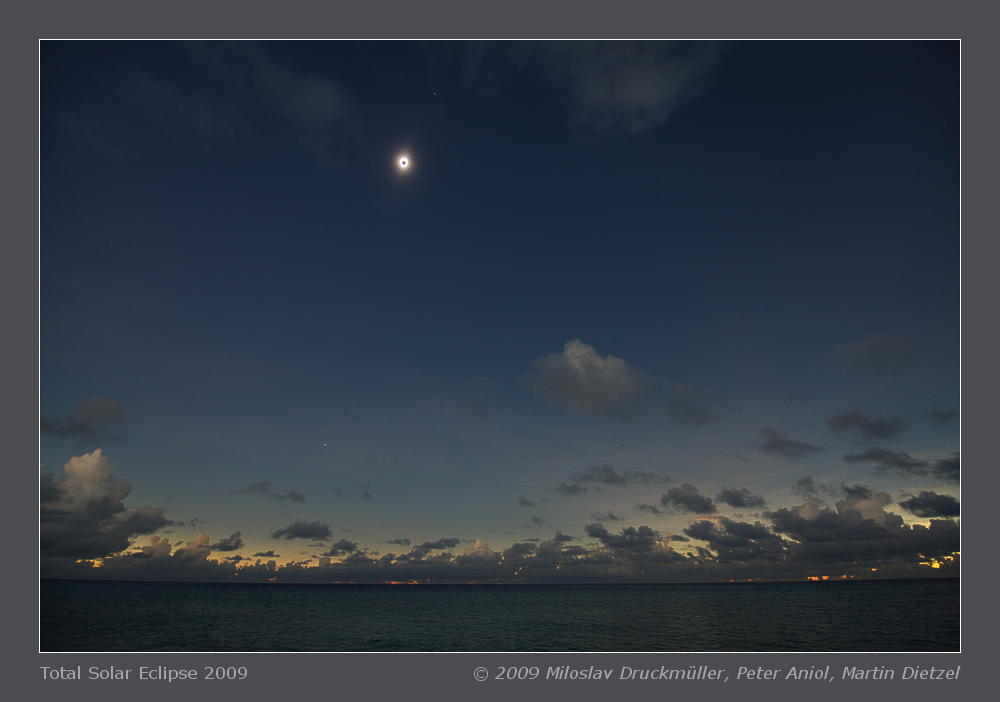 |
|
|
03:29:04 UT, 25 seconds after the second contact
|
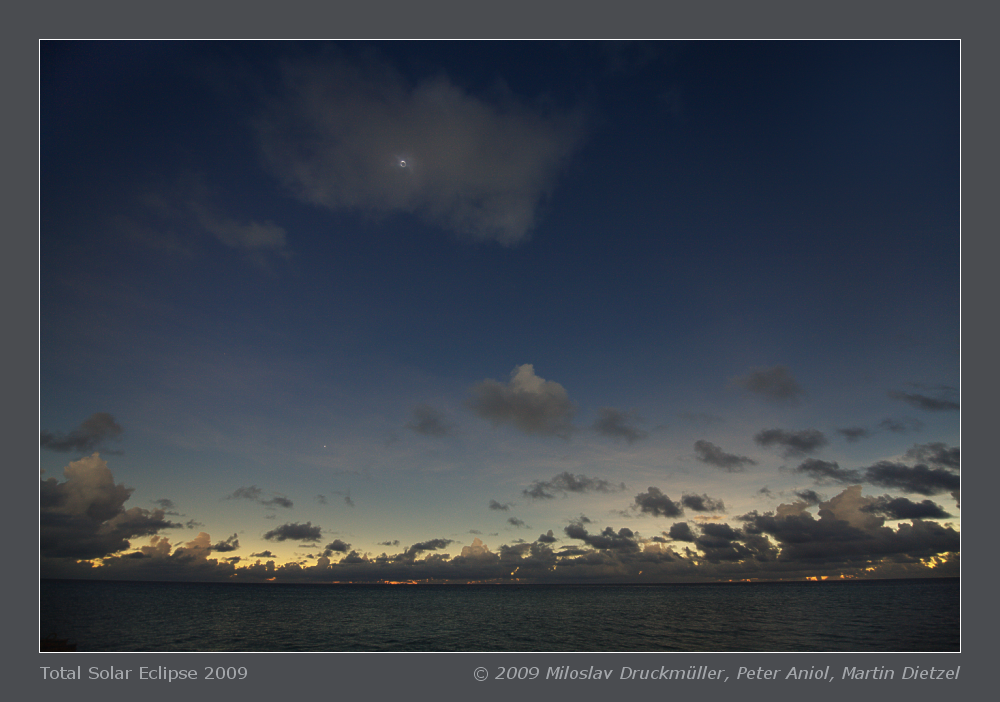 |
|
|
03:29:54 UT, 1 min 25 seconds after the second contact
|
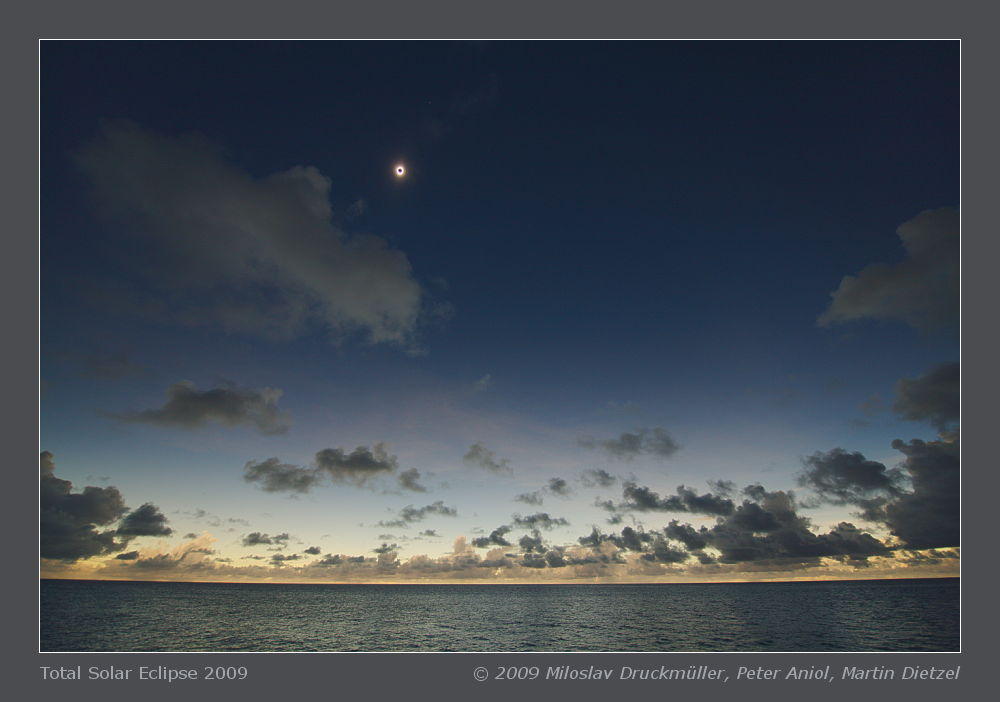 |
|
|
03:34:04 UT, 16 seconds before the third contact
|
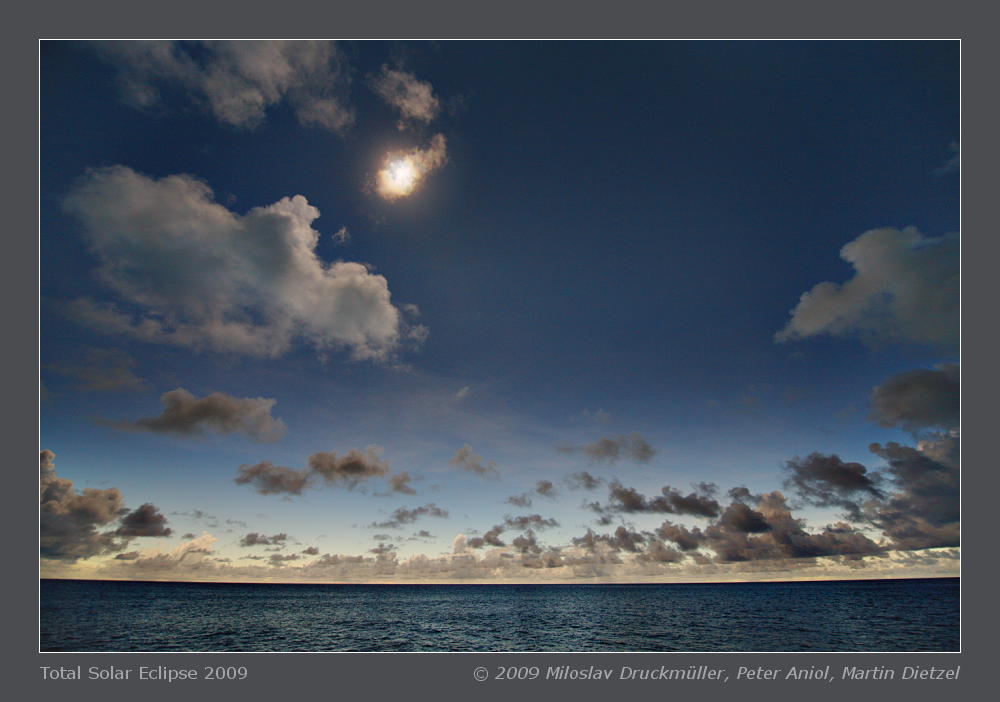 |
|
|
03:34:24 UT, 4 seconds after the third contact
|

|
Miloslav Druckmüller
Institute of Mathematics, Faculty of Mechanical Engineering
Brno University of Technology, Czech Republic
druckmuller@fme.vutbr.cz
|
|



